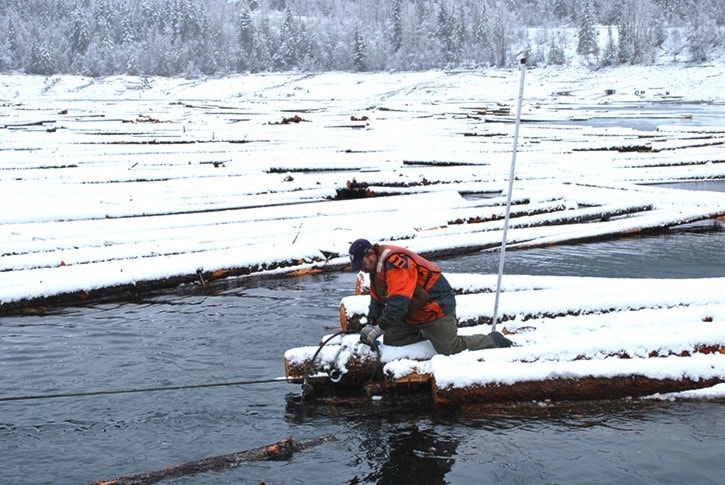Last week Interfor reached a deal to buy two timber tenures from Slocan’s Springer Creek Forest Products, subject to regulatory approvals by the Ministry of Forests, Lands and Natural Resource Operations (MFLNRO).
The two tenures have an allowable annual cut of 174,000 cubic metres, and would support increased production at Interfor’s Castlegar sawmill.
“Springer Creek is a big deal for us,” said Geoff Bekker, Castlegar Division’s Woodlands Manager for Interfor. “It’ll give us more logs for Castlegar – not that we’re going to run that many more logs through. It just gives us a secure tenure base, that’s really what it’s about.” Bekker says the acquisition shows that Interfor is investing in the long term.
Because the new tenures are located in more highly populated areas, they also come with different land use issues. Some residents take their water from watersheds in the area, said Bekker as an example of one of the issues Interfor will be addressing in the new tenures.
“When you have more people you have people who don’t necessarily want to have logging in their backyard for a bunch of reasons,” acknowledged Bekker, who said Interfor will be working with local groups and individuals to find solutions.
Treasured mushroom picking grounds, for example, aren’t something usually modeled into the cut calculations unlike caribou habitat or old growth areas or stream reserves.
“You take a strip of timber around a creek and you treat it as a park, then you know and you put a line around it and you don’t harvest it,” said Bekker, who referenced NACFOR’s recent cut plan that was formulated with the interests of local mushroom pickers in mind.
It’s a balance, he said, and although it can be frustrating for both sides from time to time, compromises can be reached. Ultimately the Ministry’s District Manager is the one who makes the decision, based on the information and studies provided.
Bekker started in Parks 33 years ago, then moved on to silviculture, and then cutting permit development, the surveying and planning stage in the logging process.
Interfor has 11 log dumps along the length of Upper Arrow Lake, with four to five operating at any given time.
Nakusp is the central part of Interfor’s wood basket, and home to Interfor’s operations in the area, including Castlegar. There are eight people on staff in the office, each with a minimum of 25 years in forestry, all of them originally Pope and Talbot employees. Interfor staff includes tugboat operators and millworkers in Castlegar as well, but the logging, trucking and road building is taken on by contractors. Logging is “stump to dump” which means contractors are responsible for hauling as well as logging.
When Pope and Talbot declared bankruptcy in 2008 and sold its operations to Interfor, Bekker made the move to the new company. Feeling the economic pinch in 2008, Interfor shut down virtually all production, focused on planning for two years, and then started up again in July 2010.
Cutting has remained relatively constant since Dec. 2010, with 450,000 cubic metres of wood being the allowable annual cut. But the lumber market has been improving, Bekker said, with the first quarter of 2013 showing the best prices in eight years.
“The lumber market has really gotten a lot better. We saw some improvements in 2012,” said Bekker, “We’re pretty optimistic although there’s no guarantee the prices will be the same the next quarter.”
